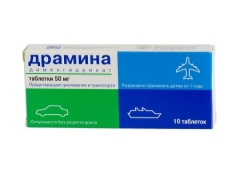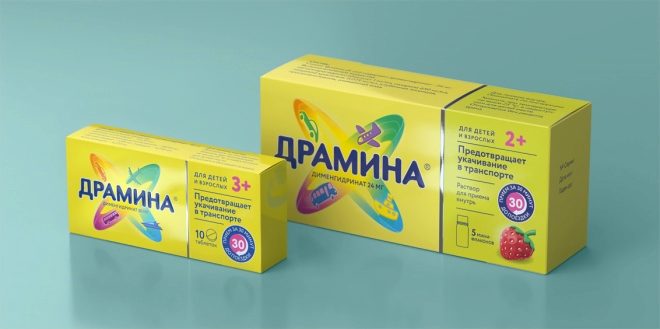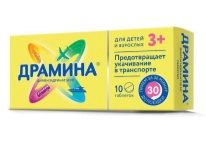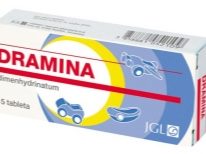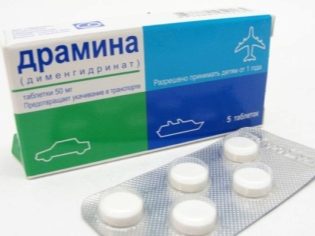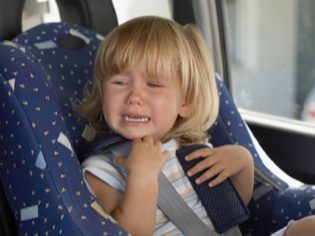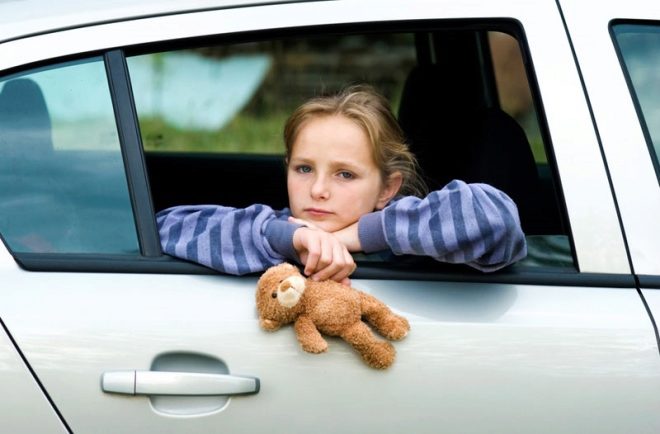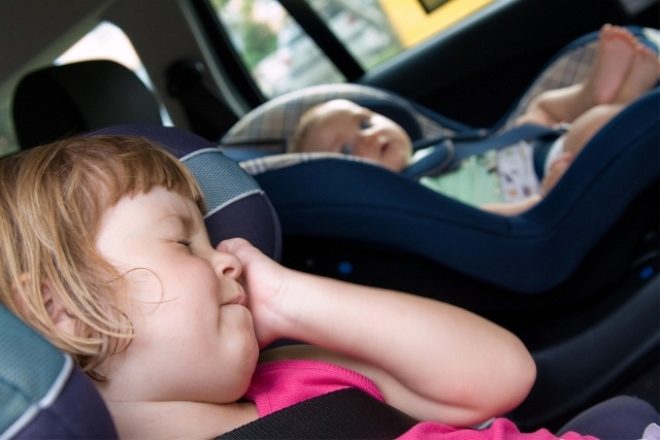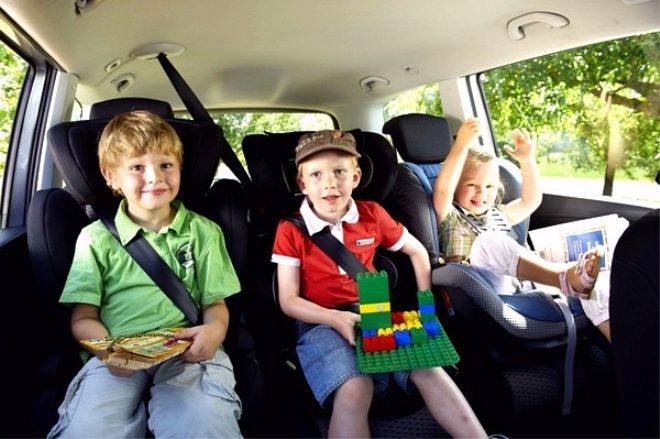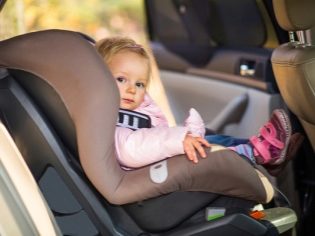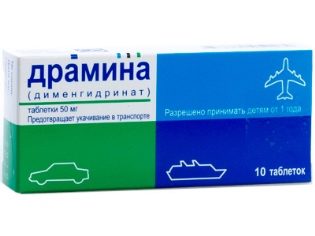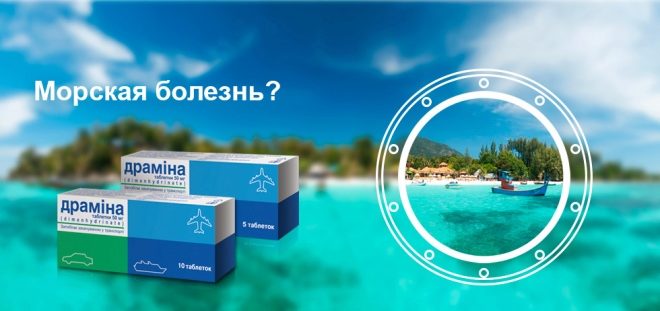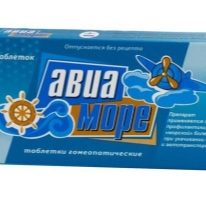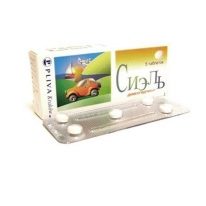Drama for children: instructions for use
Some children do not tolerate trips in different transport, which is associated with the peculiarities of the functioning of their vestibular apparatus. Such babies have nausea, sweating, tachycardia, dizziness and other negative symptoms while traveling in a car or boat trip. To combat them, a medicine called Dramina has been created. How does it affect the child's body, from what age is it used and why does it help with motion sickness?
Release form
The drug is available in tablet form, and one pack contains 5 or 10 tablets. They are characterized by a flat round shape and white color. One side of the drug has the risk that the medicine can be easily divided into halves, which is important for children.
Composition
The main ingredient of the drug, due to which the remedy helps against motion sickness, is represented by dimenhydrinate. Each tablet contains 50 mg. Microcrystalline cellulose, crospovidone and magnesium stearate are added to it. In addition, in the composition of the drug there are such excipients as povidone and lactose monohydrate.
Operating principle
Dimenhydrinate has the ability to block the H1 receptors for histamine, as well as the M-cholinergic receptors. Through this action, Dramina affects the otoliths in the inner ear, as a result of which the vestibular apparatus is inhibited. The drug has a moderate antiallergic effect. It also has a sedative and anti-emetic effect. In addition, its reception helps to eliminate dizziness.
Taken inside the tablet is absorbed very quickly, so its therapeutic effect becomes noticeable after only 15-30 minutes. The effect persists after taking the medicine for up to 6 hours, and during the day the medicine almost completely leaves the body (mainly with urine).
We also invite you to listen to Dr. Komarovsky about the causes of baby motion sickness and how to help.
Indications
Tablets prescribed:
- When rocking in the car, the train or bus, as well as with air or seasickness, when the child reacts to a trip in transport with nausea, dizziness, vomiting and other symptoms.
- With Meniere's disease. This rare pathology of the inner ear is usually manifested by problems with maintaining balance and orientation of the body in space.
- To prevent or treat symptoms of inner ear problems such as nausea and dizziness (unless they are caused by antitumor treatment). For example, the medicine is used for closed head injuries.
At what age is it allowed to take?
Doctors prescribe Dramin tablets for children from 3 years of age.. If a child is younger, for example, he is only 2 years old, treatment with this medication according to his annotation is contraindicated. In this case, it is better to consult with the pediatrician and pick up the medication permitted by age. If the child is already 3 years old, he is allowed to take Dramin's medicine.
It is advisable to discuss such treatment with a pediatrician before the first use of the medication, even if the child looks healthy and does not present any complaints besides motion sickness.
Contraindications
Treatment with dramin tablets is prohibited:
- If hypersensitivity to any of the components of such an agent.
- With epilepsy.
- In case of vesicular or exudative dermatosis (for acute).
Medical advice and caution when using the drug require children with:
- Hyperthyroidism.
- Cardiovascular pathologies.
- Bronchial asthma.
- A stomach ulcer or intestinal duodenum with obstruction or stenosis.
- Spasmodic syndrome.
- Bladder neck obstruction.
- Angle-closure glaucoma.
Side effects
While taking the pills you may experience the following negative symptoms:
- Sleepy condition.
- Mood changes.
- Sense of stiffness.
- Restless behavior.
- Insomnia.
- Edema.
- Headaches.
- Nausea.
- Tachycardia.
- Dry mouth.
- Decreased blood pressure.
- Dizziness.
- Urinary retention
- Allergic rash.
- Loose stools.
- Stomach ache.
- Visual impairment, for example, splitting or misting.
- Nasal congestion.
- Constipation.
- Redness of the skin.
In rare cases, Dramina becomes the cause of anaphylaxis, disorders of the cellular composition of the blood, excitation of the nervous system, glaucoma, and disorders of the liver. If any of these negative symptoms occur, contact your pediatrician immediately.
And now the release of the popular program Baby Blog where the specialist will give some useful tips when the child is swayed in transport.
Instructions for use and dosage
The drug is taken before meals or half an hour before the trip, to prevent the manifestation of automobile, sea or air sickness. The tablet should be swallowed and washed down with water, and chewing means is not recommended. The duration of admission is determined by the doctor. If, after the completion of the course of treatment, negative symptoms remain, the continuation of therapy or the repeated course should also be consulted with a specialist.
The medication is given 2 or 3 times a day in the following dose:
- A child of 3-6 years old - from a quarter to half a tablet at the reception.
- A child 7-12 years old - from half to the whole pill at a time.
- A child over 12 years old - one or two tablets at a time.
If a child has Meniere's disease, then at 3-12 years of age, a single dose will be 1 / 2-1 tablet, and at the age of 12 years and older - 1-2 tablets per reception.
Overdose
If a child swallows several pills at once, it can lead to dry mouth and nasopharynx, problems with breathing, confusion, and reddening of the skin of the face. In severe cases, the child has hallucinations or convulsions. This condition is treated with gastric lavage with laxatives and other symptomatic drugs.
Interaction with other drugs
Dramina tablets can enhance the effects of many medications, including sedatives, atropine, antipsychotics, hypnotics, and catecholamines. But on anticoagulants and corticosteroid hormones such a drug has the opposite effect, weakening their therapeutic effect.
It is not recommended to give such pills together with anesthetic drugs, bismuth-containing medicines and psychotropic drugs, since such combinations increase the risk of side effects on vision. In addition, the drug Dramina should not be combined with antibacterial drugs that have an ototoxic effect, for example, neomycin or amikacin. Simultaneous use of these drugs can lead to irreversible problems with hearing.
Terms of sale
Dramina is an over-the-counter medicine, so it’s easy to get such a drug at the pharmacy. The price of a pack of 10 tablets on average is 150-170 rubles.
Storage conditions
Keep the drug at home should be hidden from a small child at a temperature not higher than 25 degrees Celsius. The shelf life of the tablets is very long and is 5 years.
Reviews
Many parents speak positively of the drug and praise it for its effectiveness.Moms and doctors confirm that the drug acts very quickly and after 20-30 minutes after taking the unpleasant symptoms of motion sickness disappear, and if you take a pill before you go, you can safely spend 3 to 5 hours on the way. The disadvantages of the medication include bitter taste, frequent side effects and a small number of tablets in the package.
Analogs
If you don’t give the child Dramin tablets for any reason, the drug can be replaced by one of these means (after consulting with a pediatrician):
- Ciel The active substance of such a drug is also represented by the hydride. The drug is released in tablets that are given to children over 2 years old.
- Aviamarin. The basis of this medication is also dimenhydrinate. These pills are prescribed from 6 years of age.
- Avia-Sea. Such homeopathic pills can be given to children over 6 years old.
